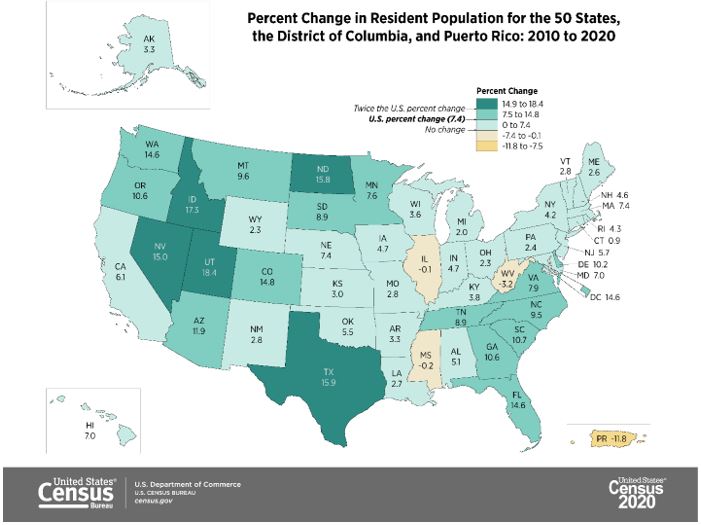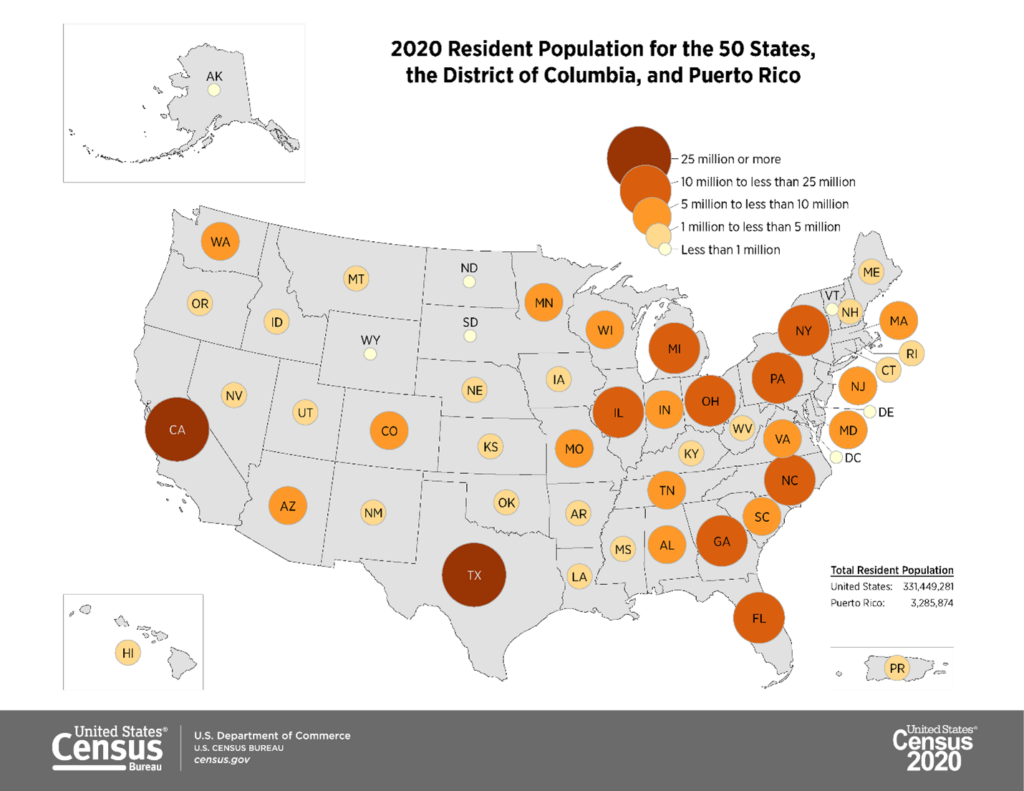Demographic data impacts corporate site location trends, and a region’s population growth plays an important role in deciding where companies may choose to retain or locate new jobs and capital investment. Demography is the study of the structure of the population in terms of size, characteristics such as age distribution and education, changes in the population due to births, mortality and net immigration, etc. In 1798, Thomas Malthus, a British essayist wrote about the effects of population growth on economic development. Regions with an increasing population base and a group of younger workers illustrate growing communities. The availability of a skilled labor pool is critical to regions being attractive to corporations searching for a location. As an example, the percentage of citizens over 25 with a college degree illustrates the likelihood the region can attract high-wage financial services, insurance, health care, high-tech, professional service and other advanced services white collar jobs. However, the most important demographic data point is the overall population growth of a region. Growing population centers provided a larger workforce pool for companies to choose from.

As the recent U.S. Census Bureau map illustrates, the U.S. West, Southwest and Southeast continue to lead the nation in population growth. While mega states like California, New York and Illinois as well as the Midwest and Appalachian states continue to struggle with population growth, Idaho, Nevada, Utah, Arizona, Texas, North Dakota, Florida, Georgia, and South Carolina all illustrated double digit growth in population.

The population size of a state also impacts the attractiveness of a state for corporate site location projects. California and Texas are the largest states in the union from a population standpoint. The next group of largest states includes Florida, Georgia, North Carolina, Ohio, Illinois, Michigan, Pennsylvania and New York. The growth of Texas illustrates how it is now on par with California from a population size standpoint while New York has moved back in a population category.
The Wall Street Journal recently reported, in half of all states last year, more people died than were born, up from five states in 2019. Early estimates show the total U.S. population grew 0.35% for the year ended July 1, 2020, the lowest ever documented, and growth is expected to remain near flat this year. Some demographers cite an outside chance the population could shrink for the first time on record. Immigration, which accounted for between a third and half of U.S. population growth during the past decade, is moving toward a resurgence because the Biden administration eased some restrictions enacted during the Trump years. The reviving economy is also drawing job seekers. Years of strong immigration could help offset fewer births. Every type of U.S. county, from the most urban to the most rural, on average saw a decrease in the number of births per death in the second half of the 2010s compared with the first half, according to census estimates.
Demographic data plays a major role in corporate site location decisions. Population growth, whether through domestic migration, immigration or an increase in births, all impacts company decisions for where they will locate jobs and capital investment.